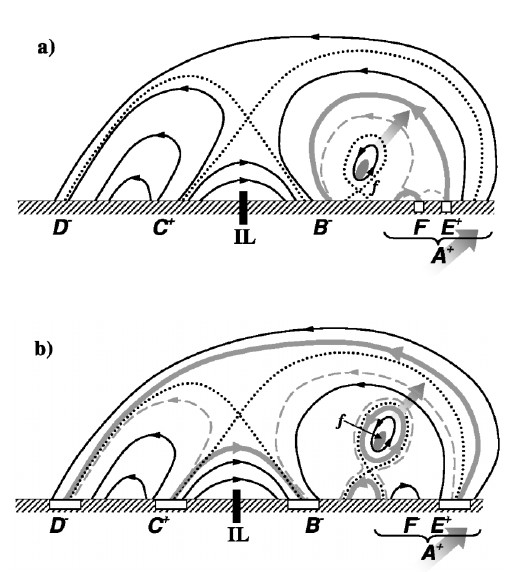
Williams, David R., Tibor Török, Pascal Démoulin, Lidia van Driel-Gesztelyi, and Bernhard Kliem, Eruption of a Kink-unstable Filament in NOAA Active Region 10696, ApJ, 628, L163-L166 (2005) (ADS)

(click on the image for a larger version)
Date: 2007 August 23
Update: 2019 December 04
The main geometrical features of a magnetic configuration, with a simplified realization along the curved IL (magnetic inversion line, not the home of Chicago), folded into a two-dimensional diagram. Dotted lines represent key separatrices; dashed lines, former connectivities later transformed by reconnection; thick solid lines, new connectivities after reconnection; and thin solid lines, continuing connectivites (sic). (a) Evolution in the initial phase of the eruption, assuming a tether-weakening due to reconnection with the new flux, EF. (b) The eruption with reconnection both above (quadrupolar) and below the erupting filament. The lower right arrow in each panel indicates the strongest photospheric motions parallel to the IL.
Archivist's snide comments: can one preserve the topology of a 3D configuration and represent it correctly in a plane by "folding" it? Thoughts of sows' ears emerge... but in spite of all the reconnection paraphernalia, the authors assert that a kink instability drives the process. If so, perhaps we can relegate reconnection into a secondary role and just ignore it here?